- Home
- Ernest Hemingway
Dateline- Toronto Page 19
Dateline- Toronto Read online
Page 19
And they all wore knickerbockers. I used to like knickerbockers for the country; they were such a fine, comfortable wealthy-feeling way of clothing your legs. But somehow I feel differently now; they could never feel the same again.
New Betting Game: Tennis Tamburello
The Toronto Daily Star
May 9, 1922
GENOA.—There is an old gambling adage that runs, “Never bet on anything that talks,” and sooner or later that adage will penetrate into Italy, and Tennis Tamburello, the latest Italian gambling craze, will be ruined.
Meanwhile more money is changing hands in the Tennis Tamburello courts in the basements of Genoa than in the roulette and baccarat casinos along the Ligurian Riviera. But the worst of the shady racetracks of the American continent are paradises of justice and honor besides the Tennis Tamburello dives.
A large square canvas with twenty-five numbered squares hangs at one end of the room. At the other end is a rectangular bookmaker’s stand where bets are accepted. Seven men in white duck trousers, white shirts, slightly soiled and varicolored sashes around their waists, sit around on chairs back of a curtain. A bell rings and they come out, one at a time, and very solemnly bat a tennis ball bounced at them by another man in soiled white ducks up against the canvas screen at the end of the room.
The batsman hits the ball with a tambourine and either lofts it in a slow loop, or hits it out on a line at the canvas screen. The score made by the batsman depends on which one of the numbered squares he hits. For instance number one comes out and slams the ball that is bounced at him against the canvas. It hits square number six. Batsman number one, a short, heavy-set little Italian who walks springily on his toes, now goes back behind the screen and number two comes out. He hits square number eighteen. So it goes.
Bets are made on any one of six batsman. You may bet on a man to hit the highest number or the lowest number. The odds are six to one, any way you bet. But there are seven horses in the race and you can only bet on six of them. When the seventh batsman wins, the money belongs to the house.
Italian nightlife has gone mad over the game. It gives all the excitement of horse-race gambling without having to go out to a racetrack, and all the population of Genoa that begin their day when most people are finishing theirs crowd around the Tamburello court to back their favorites as they come out from behind the dusty curtain to exercise their tambourine arms. When the police want anyone they make a trip to one of the Tennis Tamburello dives, where they are pretty sure to find either the man they are after or all his intimate friends. The game attracts the same night-living part of a city that you find at the six-day bike races in New York and Paris after one o’clock in the morning until the sweep-out hour of 7 a.m.
It is the big-money-playing element, the men in evening clothes and champagne breaths who are out to see the town, that makes the harvest for the Tennis Tamburello; just as it is the regular five-lire bettors of the nightlife who make up the game’s regular supporters.
When there is any amount of big money being played on any one batter, there is a scarcely perceptible pause between the bell that calls the men to the post and closes the betting wickets, and the appearance of the first batter. That pause gives time for instructions, and it is something better than 100 to 1 that the batter who is being heavily backed will not win.
Number twenty-five, painted red, is in the center of the canvas and it is a pretty poor Tennis Tambulleer who could not drive his ball away from the center if he had whispered instructions not to win. The lower right-hand side is where the low numbers are, and night after night you can watch a heavily backed batsman drive the ball into the lower right-hand corner with the ease and grace of young Jack Schaeffer making a simple billiard shot. That is where the old adage comes in. That is also where the money goes out.
Lloyd George’s Magic
The Toronto Daily Star
May 13, 1922
GENOA.—Inside the cool, marble-vaulted entrance of the Royal palace, the magnificently uniformed carabinieri stiffened to a rigid attention, a big limousine slipped quietly into gear and rolled forward from the row of cars parked in the hot sun of the palace courtyard, three photographers squatted and aimed with their Graflexes and David Lloyd George, smiling, assured and beautiful with his fresh young face, his smooth-brushed white hair and his smile-wrinkled eyes, climbed into the car, leaned back, bowed, and the car slid down the driveway and into the street.
I stood and watched the rest of the delegations’ heads come down the steps, get into their closed motorcars and, housed in glass, ride out into the street. Barthou, the Frenchman, looked like the left-hand one of the Smith Brothers of cough-drop fame. Beněs, the Czechoslovak premier, looks exactly like a barber—a cropped-headed, rather sullen barber. Stambouliski, of Bulgaria, is a great, thick-bodied, black-headed, fierce-mustached, scowling Buffalo Bill; Viscount Ishii, a small cold-faced Japanese in a morning coat and silk hat; Walter Rathenau, an egotistical, brilliant, perfectly dressed, hawk-faced, bald-headed scientist, contemptuous and confident.
It was a great show and after it was all over and the last limousine had turned into the hot, crowd-lined street and the carabinieri had settled back into the complete erect relaxation of professional soldiers, there was only one of all the statesmen who had come out and ridden away enclosed in glass who had brought any magic with him—and that was Lloyd George.
Yet the photographers that took his picture did not capture any of that magic because Lloyd George does not look like his pictures. It is a second-rate face that photographs best. If you want to prove this, get a close-up, in-the-flesh view of say one of fifty movie stars, or recall how often you have been disappointed in a photograph of your best girl. Lloyd George has no movie face. His charm, his fresh coloring—almost girlish—the complexion of a boy subaltern just out of Sandhurst, his tremendous assurance that makes him seem a tall man until you see him standing beside someone of average height; his kindly, twinkling eyes; none of these show in the photographs.
In public his staff refer to him as the prime minister or Mr. Lloyd George, but in private they speak of him as L.G. The tired, hardworking, serious, shabbily dressed group of British political writers that have been following the prime minister around Europe from conference to conference for the past four years call him George. It is the mark of the greenhorn to call Lloyd George anything but George.
“George has certainly got into a mess now. I don’t see what he is going to do,” said one of these earnest, tired men who has been chronicling the dawn of a new era at the Cannes, Spa, San Remo, Washington, Boulogne, and Genoa conferences. When the Russian-German treaty was signed, L.G. fooled him. He did nothing. After an exchange of acrid notes between the Allies and Germany when an impasse was obviously reached and one side or the other must yield, L.G. simply considered the incident closed—and it was closed. All the flames died down and the conference went on with its work.
I stood behind Lloyd George at the meeting of the press of all nations that he called when the German-Russian treaty was under discussion. There had been wild rumors about the meeting. Some had it that L.G. was to read the Russians and Germans out of the conference and was calling us all together for the grand breakup speech. As soon as he came into the room—the meeting was held in the same hall of the Palazzo San Giorgio where the conference was opened—it was apparent that the rumor was wrong. L.G. came smiling in his greatest role, that of conciliator, and for an hour and a half he answered written questions submitted to him by the 400 newspapermen that sat at the delegates’ tables and stood massed around the center of the hall.
While the answers, delivered standing in his clear, oratorically modulated voice, were being translated into French and Italian, I watched him studying the pile of papers before him scrawled with questions handed to his table by the journalists. Facing L.G., his white hair carefully brushed back above his ears does not look long. He looks anything but effeminate. But standing close behind him you see that hi
s hair is really as long as Paderewski’s. Just above his collar it is a thick mane that, if it were mussed and not carefully brushed would make a terrific shock.
While I watched Lloyd George studying the questions he would answer—and he answered six out of a hundred or more submitted, and they were very carefully selected queries, such as, “What kind of people do not like this conference?” and, “Does the prime minister believe that the Russians and Germans are seeking to wreck the conference?”—a young Italian artist was sketching him. When he finished answering questions and came smiling through the crowd, the young artist held up the sketch for him to sign.
Lloyd George smiled, wrinkled up his mustache and the corners of his eyes, as he looked at the sketch and signed it with the boy artist’s crayon.
“There. Will that do?” He handed the sketch pad back to the boy.
“Thank you very much, sir,” said the artist.
I looked at the sketch. It wasn’t bad. But it wasn’t Lloyd George. The only thing that was alive in it was the sprawled-out signature, gallant, healthy, swashbuckling, careless and masterful, done in a moment and done for all time, it stood out among the dead lines of the sketch—it was Lloyd George.
Fishing the Rhône Canal
The Toronto Daily Star
June 10, 1922
GENEVA.—In the afternoon a breeze blows up the Rhone valley from Lake Geneva. Then you fish upstream with the breeze at your back, the sun on the back of your neck, the tall white mountains on both sides of the green valley and the fly dropping very fine and far off on the surface and under the edge of the banks of the little stream, called the Rhone canal, that is barely a yard wide, and flows swiftly and still.
Once I caught a trout that way. He must have been surprised at the strange fly and probably struck from bravado, but the hook set and he jumped into the air twice and zigged nobly back and forth and toward every patch of weed at the current bottom until I slid him up the side of the bank.
He was such a fine trout that I had to keep unwrapping him to take a look and finally the day got so hot that I sat under a pine tree on the bank of the stream and unwrapped the trout entirely and ate a paper-bag full of cherries I had and read the trout-dampened Daily Mail. It was a hot day, but I could look out across the green, slow valley past the line of trees that marked the course of the Rhone and watch a waterfall coming down the brown face of the mountain. The fall came out of a glacier that reached down toward a little town with four gray houses and three gray churches that was planted on the side of the mountain and looked solid, the waterfall, that is, until you saw it was moving. Then it looked cool and flickering, and I wondered who lived in the four houses and went to the three churches with the sharp stone spires.
Now if you wait until the sun gets down behind the big shoulder of the Savoie Alps where France joins on to Switzerland, the wind changes in the Rhone valley and a cool breeze comes down from the mountains and blows downstream toward the Lake of Geneva. When this breeze comes and the sun is going down, great shadows come out from the mountains, the cows with their many-pitched bells begin to be driven along the road, and you fish down the stream.
There are a few flies over the water and every little while some big trout rises and goes “plop” where a huge tree hangs over the water. You can hear the “plop” and look back of you up the stream and see the circles on the water where the fish jumped. Then is the time to rewrap the trout in Lord Northcliff’s latest speech reported verbatim, the reported imminent demise of the coalition, the thrilling story of the joking earl and the serious widow, and, saving the [Horatio] Bottomley [fraud] case to read on the train going home, put the trout-filled paper in your jacket pocket. There are great trout in the Canal du Rhone, and it is when the sun has dropped back of the mountains and you can fish down the stream with the evening breeze that they can be taken.
Fishing slowly down the edge of the stream, avoiding the willow trees near the water and the pines that run along the upper edge of what was once the old canal bank with your back cast, you drop the fly onto the water at every likely looking spot. If you are lucky, sooner or later there will be a swirl or a double swirl where the trout strikes and misses and strikes again, and then the old, deathless thrill of the plunge of the rod and the irregular plunging, circling, cutting upstream and shooting into the air fight the big trout puts up, no matter what country he may be in. It is a clear stream and there is no excuse for losing him when he is once hooked, so you tire him by working him up against the current and then when he shows a flash of white belly, slide him up against the bank and snake him up with a hand on the leader.
It is a good walk in to Aigle. There are horse chestnut trees along the road with their flowers that look like wax candles and the air is warm from the heat the earth absorbed from the sun. The road is white and dusty, and I thought of Napoleon’s Grand Army, marching along it through the white dust on the way to the St. Bernard Pass and Italy. Napoleon’s batman may have gotten up at sunup before the camp and sneaked a trout or two out of the Rhone canal for the Little Corporal’s breakfast. And before Napoleon, the Romans came along the valley and built this road and some Helvetian in the road gang probably used to sneak away from the camp in the evening to try for a big one in one of the pools under the willows. In the Roman days the trout perhaps weren’t as shy.
So I went along the straight white road to Aigle through the evening and wondered about the Grand Army and the Romans and the Huns that traveled light and fast, and yet must have had time to try the stream along toward daylight, and very soon I was in Aigle, which is a very good place to be. I have never seen the town of Aigle; it straggles up the hillside, but there is a café across the station that has a galloping gold horse on top, a great wisteria vine as thick as a young tree that branches out and shades the porch with hanging bunches of purple flowers that bees go in and out of all day and that glisten after a rain, green tables with green chairs, seventeen percent dark beer. The beer goes foaming out in great glass mugs that hold a quart and cost forty centimes, and a bar-maid smiles and asks about your luck.
Trains are always at least two hours apart in Aigle, and those waiting in the station buffet, this café with the golden horse and the wisteria-hung porch is a station buffet, mind you, wish they would never come.
Fascisti Party Half-Million
The Toronto Daily Star
June 24, 1922
MILAN.—Benito Mussolini, head of the Fascisti movement, sits at his desk at the fuse of the great powder magazine that he has laid through all Northern and Central Italy and occasionally fondles the ears of a wolf-hound pup, looking like a short-eared jackrabbit, that plays with the papers on the floor beside the big desk. Mussolini is a big, brown-faced man with a high forehead, a slow smiling mouth, and large, expressive hands.
“The Fascisti are now half a million strong,” he told me. “We are a political party organized as a military force.”
Talking slowly in Italian and choosing his words in order that he might be sure that I understood everything he said, he went on to tell how the Fascisti have 250,000 troops organized into squads of Camicie Nere, or black shirts, as shock troops of the political party. “Garibaldi had red shirts,” he smiled deprecatingly.
“We are not out to oppose any Italian government. We are not against the law,” Mussolini explained in carefully accented words, leaning back in his editorial chair and emphasizing his points with his great brown hands. “But,” he enunciated very slowly and carefully, “we have force enough to overthrow any government that might try to oppose or destroy us.”
“How about the Guardia Regia?” I asked. (The Guardia Regia are the recently organized force of troops from the South of Italy formed by Ex-Premier Nitti to keep the peace in case of civil war.)
“The Guardia Regia will never fight us!” Mussolini said.
Now that situation needs a bit of examination and comparison. The Fascisti platform is one of extreme conservatism. Imagine the Conservative part
y of Canada with 250,000 men under arms, “a political party organized as a military force,” with their leader declaring that they have force enough to overthrow any Liberal or other government that might oppose them. It makes quite a picture, doesn’t it? At the same time imagine a special military police force having been created to prevent the Conservatives from battling in the streets with the Liberals, and you have a good angle of observation on the present Italian political situation. Mussolini was a great surprise. He is not the monster he has been pictured. His face is intellectual, it is the typical “Bersagliere” face, with its large, brown, oval shape, dark eyes and big, slow-speaking mouth. Mussolini is often described as a “renegade Socialist,” but he seems to have had a very good reason for his renunciation of the party.
Born 37 years ago in the Romagna in a little town called Foli, he started life in a hotbed of revolution. It was near his birthplace that the revolution of 1913 occurred, the “red wig” revolt in which Malatesta, the famous Italian anarchist, attempted to establish a republic. Mussolini began his career as a schoolteacher when he was under twenty. He drifted into journalism and made his first prominent appearance in Trento as an associate of Cesare Battisti on the Libertá Cesare Battisti was the Italian who was captured, wounded by the Austrians while he was an officer of Alpini, and hanged in the Castle of Trento because he was born in the part of Italy held by the Austrians.
When war broke out in 1914 Mussolini was editor of Avanti, the Socialist daily paper of Milan. He worked for Italy going into the war on the side of the Allies so strongly that the management of his paper dispensed with his services and Mussolini founded his own paper, the Popolo d’Italia, to set forth his views. He sank all his money in this enterprise and as soon as Italy entered the war enlisted in the crack “Bersagliere” corps as a private.

 The Old Man and the Sea
The Old Man and the Sea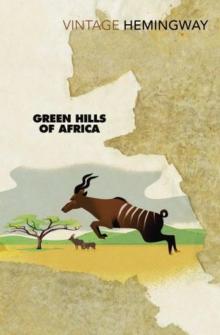 Green Hills of Africa
Green Hills of Africa The Sun Also Rises
The Sun Also Rises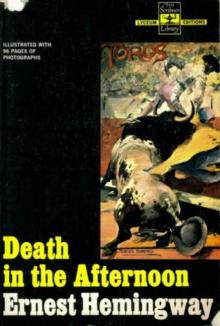 Death in the Afternoon
Death in the Afternoon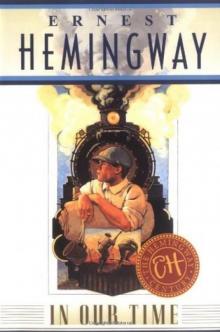 In Our Time
In Our Time For Whom the Bell Tolls
For Whom the Bell Tolls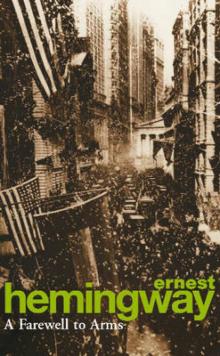 A Farewell to Arms
A Farewell to Arms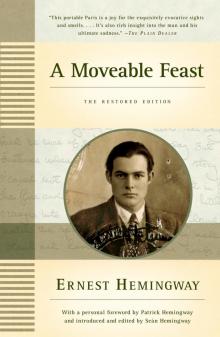 A Moveable Feast
A Moveable Feast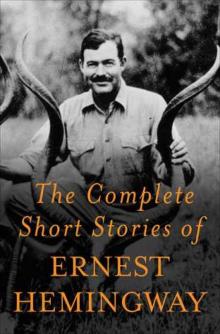 The Complete Short Stories of Ernest Hemingway
The Complete Short Stories of Ernest Hemingway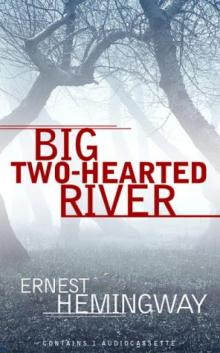 Big Two-Hearted River
Big Two-Hearted River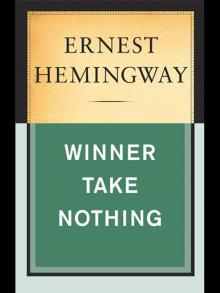 Winner Take Nothing
Winner Take Nothing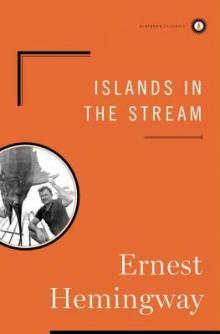 Islands in the Stream
Islands in the Stream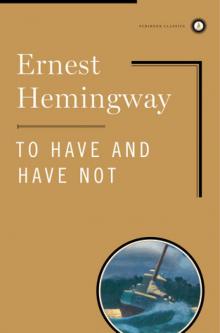 To Have and Have Not
To Have and Have Not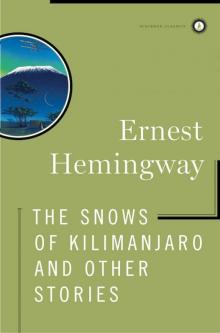 The Snows of Kilimanjaro and Other Stories
The Snows of Kilimanjaro and Other Stories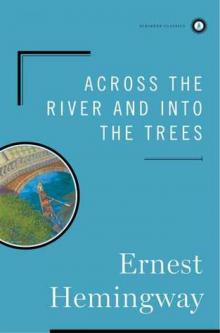 Across the River and Into the Trees
Across the River and Into the Trees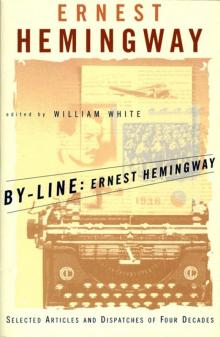 By-Line Ernest Hemingway
By-Line Ernest Hemingway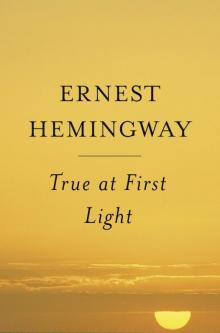 True at First Light
True at First Light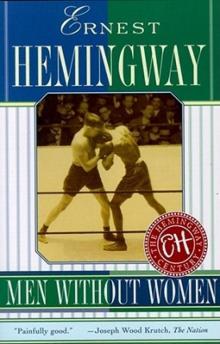 Men Without Women
Men Without Women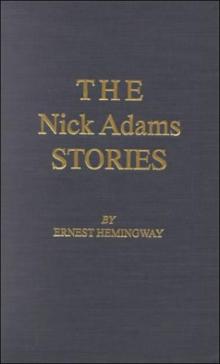 The Nick Adams Stories
The Nick Adams Stories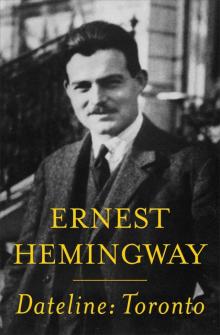 Dateline- Toronto
Dateline- Toronto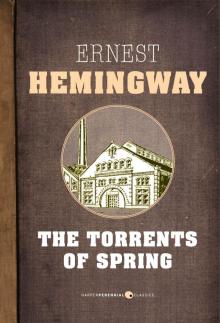 The Torrents of Spring
The Torrents of Spring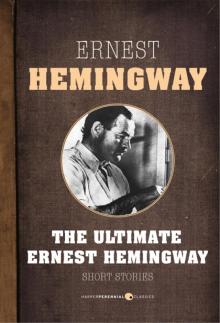 Short Stories
Short Stories